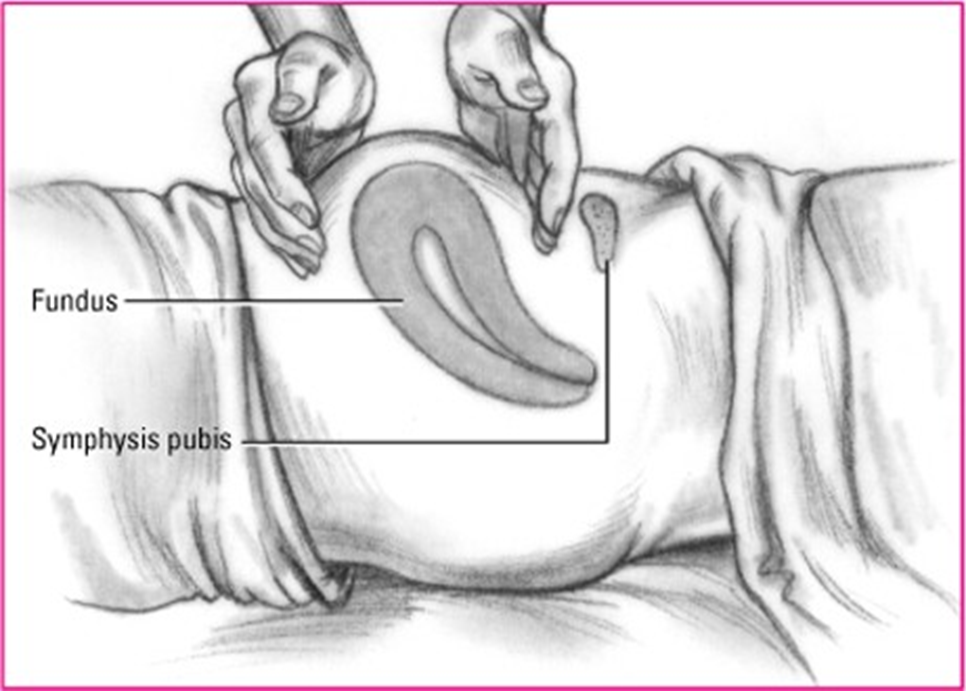A nurse is collecting data from a patient who gave birth one week ago.
Which of the following findings should the nurse identify as a manifestation of endometritis?
Increased heart rate.
Decreased appetite.
Swelling in the ankles.
Dry skin.
The Correct Answer is C
Choice C rationale:
Endometritis is an inflammation of the inner lining of the uterus (endometrium). It is a common complication after childbirth,
affecting up to 1 in 10 women who deliver vaginally. Symptoms of endometritis typically develop within 1-3 days after
childbirth, but they can sometimes take up to a week to appear.
Swelling in the ankles is a common symptom of endometritis. This is because endometritis can cause inflammation and fluid
buildup in the pelvis, which can put pressure on the veins in the legs and cause them to swell.
Choice A rationale:
An increased heart rate can be a symptom of endometritis, but it is not a specific symptom. An increased heart rate can also be
caused by many other factors, such as fever, dehydration, and anxiety.
Choice B rationale:
Decreased appetite can be a symptom of endometritis, but it is not a specific symptom. Decreased appetite can also be caused
by many other factors, such as pain, fatigue, and nausea.
Choice D rationale:
Dry skin is not a typical symptom of endometritis. Dry skin can be caused by many other factors, such as dehydration,
medications, and underlying medical conditions.
Therefore, the most likely manifestation of endometritis in this patient is swelling in the ankles.
Nursing Test Bank
Naxlex Comprehensive Predictor Exams
Related Questions
Correct Answer is B
Explanation
Choice A rationale:
Three fingerbreadths above the umbilicus is too high for the uterine fundus to be at 12 hours postpartum. Immediately after delivery, the fundus is typically at the level of the umbilicus. It then descends approximately one fingerbreadth per day.
If the fundus is found to be three fingerbreadths above the umbilicus at 12 hours postpartum, it could be a sign of uterine atony, which is a serious condition that can lead to postpartum hemorrhage.
Choice C rationale:
One fingerbreadth above the symphysis pubis is too low for the uterine fundus to be at 12 hours postpartum. This would be more consistent with a woman who is several days postpartum.
Choice D rationale:
One fingerbreadth below the umbilicus is also too low for the uterine fundus to be at 12 hours postpartum. This would be more consistent with a woman who is 1-2 days postpartum.

Correct Answer is C
Explanation
Choice A rationale:
Urinary retention is not a common sign of impending labor. In fact, it's more likely to occur in the early stages of pregnancy
due to hormonal changes and the pressure of the growing uterus on the bladder. As labor approaches, the baby's head often
descends into the pelvis, which can relieve some of the pressure on the bladder and make urination more frequent, not less
frequent.
Urinary retention can be a sign of other medical concerns, such as a urinary tract infection or problems with bladder function.
It's important to report any difficulty urinating to a healthcare provider for proper evaluation and treatment.
Choice B rationale:
A decrease in vaginal discharge is not typically associated with impending labor. On the contrary, many women notice an
increase in vaginal discharge, often referred to as "bloody show," as labor approaches. This discharge is typically pink or
brownish in color and may contain streaks of blood. It's caused by the release of the mucus plug that seals the cervix during
pregnancy.
A decrease in vaginal discharge could be a sign of other issues, such as a decrease in amniotic fluid or a yeast infection. It's
important to report any changes in vaginal discharge to a healthcare provider for assessment.
Choice D rationale:
A weight gain of 0.5 to 1.5 kilograms (1 to 3 pounds) is not a reliable sign of impending labor. Weight fluctuations are common
in late pregnancy due to factors such as fluid retention and changes in blood volume. Some women may even lose a small
amount of weight in the days leading up to labor.
While significant weight gain (more than 2 kilograms or 4 pounds in a week) could indicate a potential issue like preeclampsia,
a small weight gain or loss is not typically a cause for concern in terms of labor onset.
Choice C rationale:
A surge of energy, often referred to as "nesting instinct," is a common sign that labor may be approaching. This sudden burst of
energy can manifest as a strong urge to clean, organize, and prepare the home for the baby's arrival. It's thought to be caused
by a combination of hormonal changes and the body's natural instincts to prepare for childbirth.
While the exact timing of labor is unpredictable, experiencing a surge of energy, especially in conjunction with other signs like
increased Braxton Hicks contractions, lower back pain, or pelvic pressure, may suggest that labor is likely to start within the
next few days or weeks.
Whether you are a student looking to ace your exams or a practicing nurse seeking to enhance your expertise , our nursing education contents will empower you with the confidence and competence to make a difference in the lives of patients and become a respected leader in the healthcare field.
Visit Naxlex, invest in your future and unlock endless possibilities with our unparalleled nursing education contents today
Report Wrong Answer on the Current Question
Do you disagree with the answer? If yes, what is your expected answer? Explain.
Kindly be descriptive with the issue you are facing.
